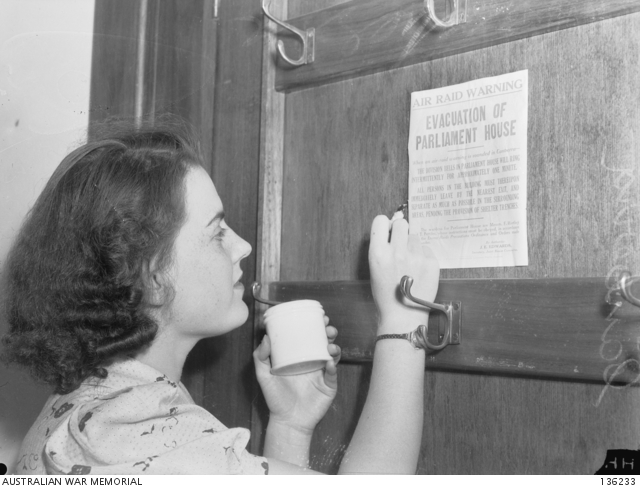Canberra home front
From1942, the threat of Japanese invasion seemed very real for Australia. As the capital, Canberra was considered a target, so there was rapid development of air raid precautions. Sirens were installed throughout the city, including at the Ainslie and Kingston Bus Depots, and air raid warden posts were established throughout the suburbs. The Canberra landscape changed noticeably as trenches were dug near schools, public buildings, shopping centres and in residential areas.
Regular black-out and air-raid siren drills were held. To add to the realism, heavy bombers and fighters would carry out manoeuvres over the city.
Everyday life was regulated so that resources could be directed to the war effort. Friday night shopping was suspended during the war, and rationing was begun for petrol, food, and clothing.
Air raid trenches were dug near all buildings in Canberra in preparation for air raid drills and evacuations
During the Second World War, Canberra’s public buildings were quick to respond to the possible threat of an air raid by preparing evacuation plans for their employees.
Enemy Raids Precautions Services badge
This badge indicated that the wearer was a trained volunteer with Canberra’s Enemy Raids Precautions (ERP) Services during the Second World War.
Ainslie air raid siren
Air raid sirens were installed around Canberra during the Second World War as part of the Canberra Enemy Raids Precautions program. This siren is believed to have been installed at the Ainslie Bus Depot at the intersection of Stephen and Tyson Streets.
The siren had an average sound range of 8 kilometres and could make two distinct signals: the Raid Imminent Signal and the All Clear Signal. The sirens were tested twice weekly until August 1943, and then every week. The last time the sirens sounded was on 15 August 1945, to celebrate the end of the war against Japan.




